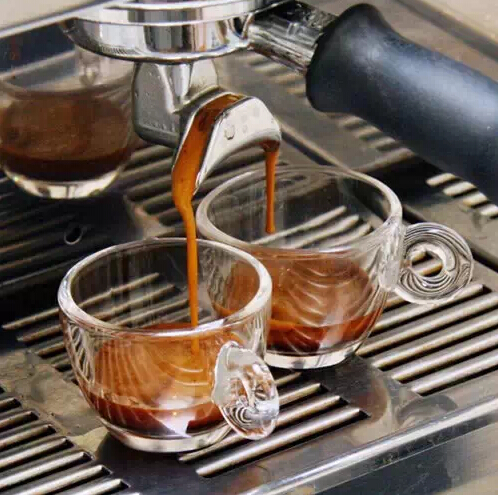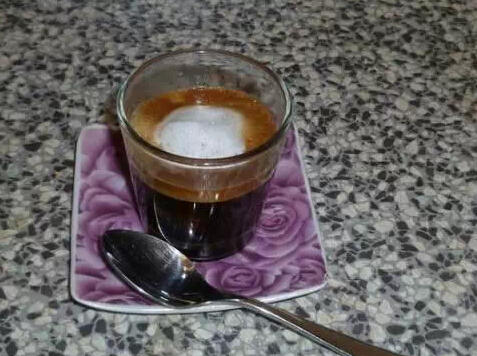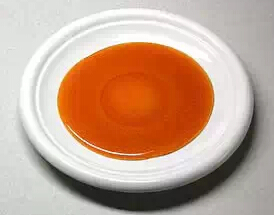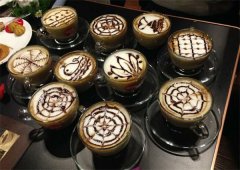Italian latte Caff è Latte introduces the origin of latte
The history of lattes
This is the story of 1683. This year, the Turkish army attacked Vienna for the second time. The then Emperor Augustus I of Vienna had an offensive and defensive alliance with King Augustus II of Poland, and as soon as the Poles heard the news, reinforcements would arrive quickly. But the question is, who will break through the siege of the Turks to deliver letters to the Poles? Kochsky, a Viennese who had traveled in Turkey, volunteered to deceive the besieged Turkish army in fluent Turkish, crossed the Danube and moved to Poland.
Although the Ottoman army was brave and skillful, it retreated hastily under the attack of the Polish and Viennese armies, leaving behind a large number of military supplies outside the city. among them are dozens of sacks of coffee beans-coffee beans that the Muslim world has controlled for centuries that have refused to flow out so easily into the hands of Viennese.
Magic drink

But the Viennese don't know what it is. Only Kochsky knows that this is a magical drink. So he asked for dozens of sacks of coffee beans as a reward for breaking through the siege, and used the trophies to open a cafe in Vienna, Blue bottle. At first, the business of the cafe was not good. The reason is that Europeans do not like to drink coffee grounds with coffee grounds as the Turks do. So the clever Kochsky changed the recipe, filtering out the coffee grounds and adding a lot of milk-this is the original version of the latte that is common in cafes today.
Italian latte
Italian latte-Caff è Latte requires a small cup of Espresso (Italian coffee word) and a cup of milk (150mm 200ml). Lattes have more milk and less coffee, which is very different from Cappuccino (cappuccino). The latte is as simple as pouring nearly boiling milk into a freshly made espresso. In fact, there is no fixed rule on how much milk is added, and it can be freely mixed according to individual taste.
American latte

If you add some frothy cold milk to the hot milk, it becomes an American latte. Starbucks American lattes are made in this way, with espresso at the bottom, milk heated to 60 to 65 ℃ in the middle, and cold milk foam of no more than half a centimeter.
Caramel latte

Caramel latte-there is another kind of latte called caramel latte. It is made from food-grade sugars such as glucose, fructose, sucrose, inverted sugar, maltose syrup, corn syrup, molasses, starch hydrolysates, etc., heated (or pressurized) at a high temperature above 121℃, and further treated.
Recommend Italian Pascucci latte.
Important Notice :
前街咖啡 FrontStreet Coffee has moved to new addredd:
FrontStreet Coffee Address: 315,Donghua East Road,GuangZhou
Tel:020 38364473
- Prev

12 constellations exclusive coffee, see which one is suitable for you!
People who like to drink coffee are happy, because you can get a romance in the process of tasting coffee. 12 constellations like coffee in different ways, which makes the coffee world lively. Will you drink your constellation coffee? Aries (03Comp21-04gam20) Aries, with a natural narrow heart, will never flinch when he is particularly vigorous.
- Next

Drinking coffee depends on how to enjoy a good cup of coffee.
Going to a coffee shop to taste coffee is a daily necessity for most foreigners, so it's not a big deal. The purpose of going to a coffee shop is mostly just to chat, so it's easy. But if you go to the cafe for business, personal manners and manners are very important. It may be important to have some unwritten traditional courtesy of coffee, such as not holding it all the time.
Related
- Beginners will see the "Coffee pull flower" guide!
- What is the difference between ice blog purified milk and ordinary milk coffee?
- Why is the Philippines the largest producer of crops in Liberia?
- For coffee extraction, should the fine powder be retained?
- How does extracted espresso fill pressed powder? How much strength does it take to press the powder?
- How to make jasmine cold extract coffee? Is the jasmine + latte good?
- Will this little toy really make the coffee taste better? How does Lily Drip affect coffee extraction?
- Will the action of slapping the filter cup also affect coffee extraction?
- What's the difference between powder-to-water ratio and powder-to-liquid ratio?
- What is the Ethiopian local species? What does it have to do with Heirloom native species?

